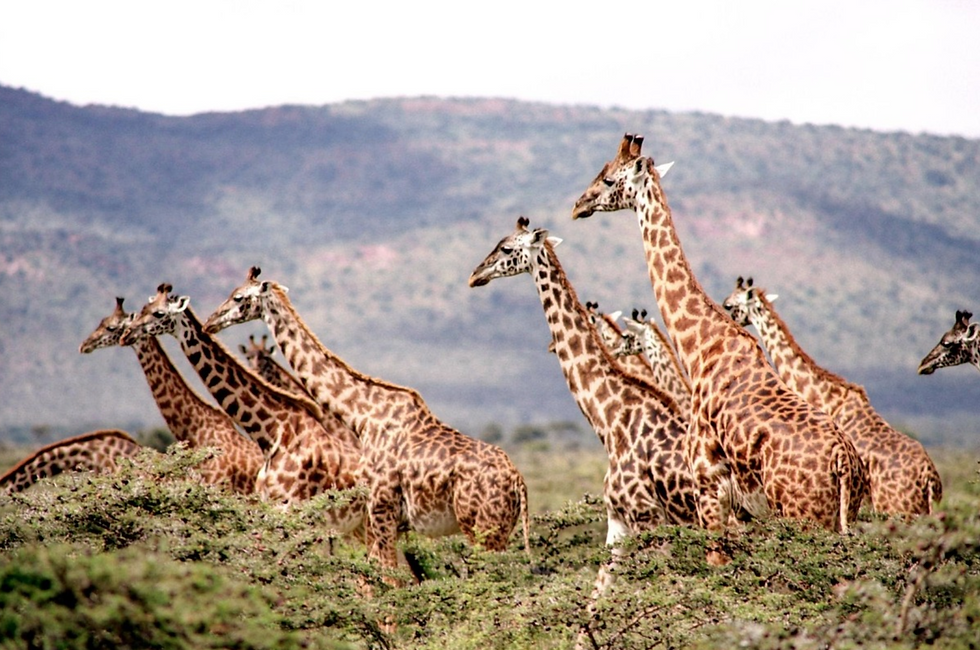How Tall Is A Giraffe?
- jessiekdesign
- Apr 19, 2023
- 3 min read
Giraffes are the tallest mammals in the world and are known for their long necks and legs. The average height of a giraffe is approximately 14-18 feet, although some individuals can reach up to 20 feet tall.

The height of a giraffe is determined by several factors, including genetics and the availability of food. Giraffes in areas with abundant food resources tend to be taller than those in areas with limited food supplies.
Giraffes have long necks because they have an exceptionally long spinal column, which is composed of seven vertebrae. Each vertebra can be up to 10 inches in length and weigh up to 11 pounds. The elongated vertebrae give giraffes their characteristic height and flexibility, allowing them to reach high branches and feed on leaves that are not available to other herbivores.

Giraffe calves are born quite tall, typically measuring around 6 feet in height at birth. During their first few weeks of life, giraffe calves can grow as much as one inch per day, reaching heights of up to 10 feet by the time they are a year old.
The growth rate of giraffe calves slows down as they reach adulthood, but they continue to grow until they reach their full height of 14 to 18 feet. This growth rate is one of the fastest of any mammal, and is due to the high levels of nutrients and protein in their diet of leaves and shoots.

Despite their height, giraffes are surprisingly agile and can run at speeds of up to 35 miles per hour. Their long legs, which can measure up to 6 feet in length, are designed for speed and provide giraffes with the ability to quickly escape from predators. In addition to their height, giraffes have several other unique physical features that allow them to survive in their habitats.
One of the most distinctive features of giraffes is their long neck, which is made up of seven vertebrae that can measure up to 10 inches in length each. Despite its length, the giraffe's neck is proportionate to its body size and provides the animal with the ability to reach high branches and feed on leaves that are not available to other herbivores.

Another unique feature of giraffes is their spotted coat, which provides camouflage in their woodland habitats. The patterns on a giraffe's coat are as unique as fingerprints and no two giraffes have exactly the same coat pattern.
Giraffes also have long, powerful legs that can measure up to 6 feet in length and are designed for speed. Their legs are muscular and allow giraffes to run at speeds of up to 35 miles per hour, making them one of the fastest land animals. The strength and agility of their legs also allows them to defend themselves against predators, such as lions and hyenas.

Giraffes have large, prehensile tongues that can measure up to 18 inches in length. This long tongue helps giraffes to grip leaves and branches as they feed, and also enables them to remove thorns from vegetation before consuming it.
Another important physical feature of giraffes is their heart, which is large and powerful to pump blood up to their heads. The giraffe's heart can weigh up to 25 pounds and can pump blood to a height of 6 feet, enabling the animal to reach high branches and feed on leaves without experiencing a drop in blood pressure.
Overall, the physical features of giraffes are adaptations that have evolved over time to help the animal survive in its habitat. Whether it's their height, spotted coat, long legs, prehensile tongue, or powerful heart, each feature plays an important role in the survival and success of giraffes in the wild.

Comments